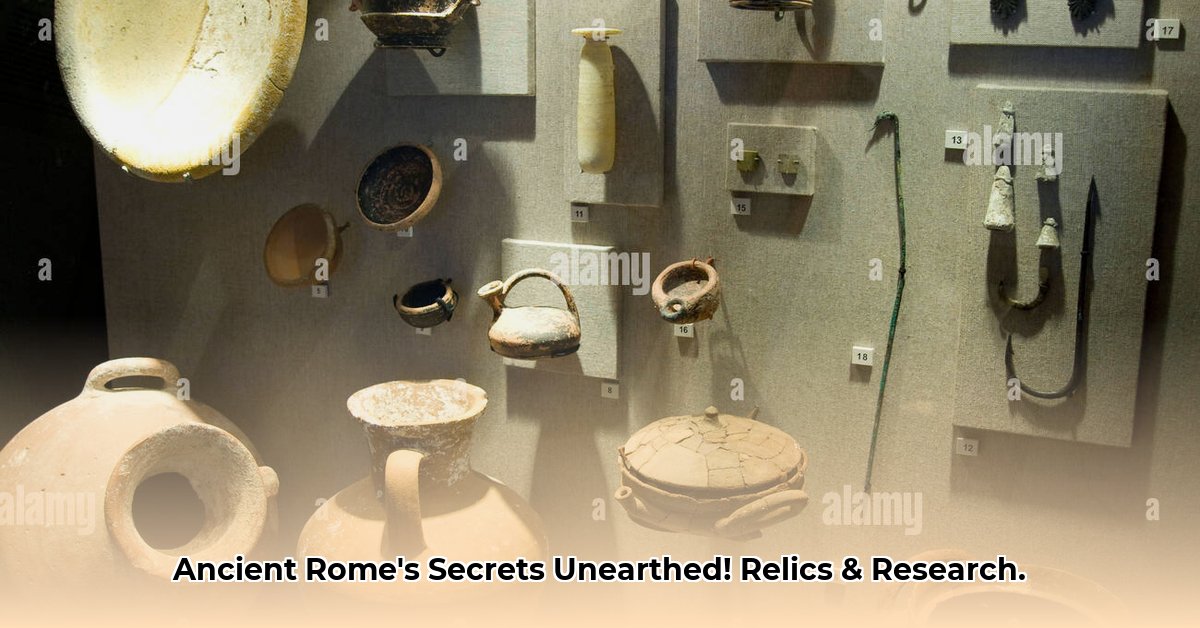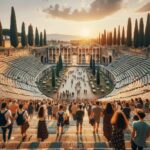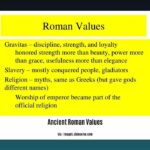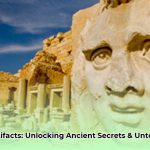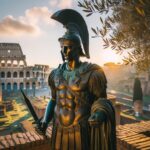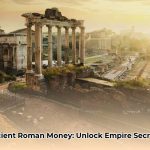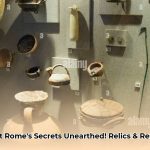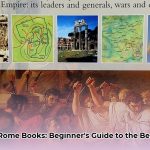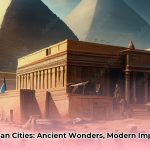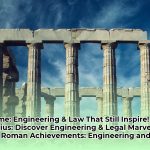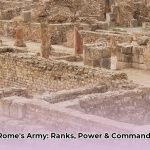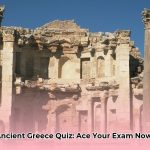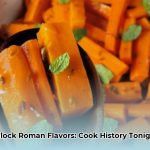Ever wondered what it would be like to step back in time and truly connect with the ancient Romans? While a time machine remains elusive, their artifacts provide an unparalleled gateway to their world. These aren’t just museum exhibits; they are tangible whispers from the past, offering crucial insights into their daily lives, deepest beliefs, and remarkable ingenuity. You can **[explore relics here](https://www.lolaapp.com/ancient-roman-artifacts/)**. Learn more about these treasures at this resource for **ancient Roman artifacts**. Prepare to excavate some of the most fascinating Roman treasures. We’ll delve into monumental projects like the Colosseum and Trajan’s Column, explore the complex journey of these relics to the present day, scrutinize their verified authenticity, and discover how these ancient finds continue to inform and inspire us.
Our journey through Roman material culture reveals three pivotal truths about this enduring civilization:
- Roman artifacts offer crucial insights into the empire’s socio-political structure, culture, technology, and art.
- Verifying the authenticity of these artifacts demands rigorous examination to combat prevalent forgeries and ensure ethical acquisition.
- Modern technologies combined with ancient wisdom are vital for the long-term preservation of these invaluable historical treasures for future generations.
Unveiling Ancient Rome Artifacts: Discover Actionable Insights from Relics, Backed by Research!
What can we truly glean from ancient Rome artifacts? Far more than you might imagine. They function as profound historical connectors, offering tangible links to how people lived, what they valued, and how their society thrived millennia ago. Forget the often-dry historical texts. Imagine the profound sensation of standing before the majestic Colosseum, a symbol of Rome’s grandeur, or holding a piece of humble Roman pottery, something an ancient Roman family genuinely used at their dinner table. Suddenly, history transcends mere reading; it becomes an immersive experience, a palpable connection to the past.
Consider, for a moment, that unassuming piece of pottery, perhaps an amphora used for wine or olive oil. What stories might it tell? It could reveal details about their typical diet, perhaps hinting at their agricultural practices or culinary traditions. It might expose their extensive trade networks, indicating the origin of the clay or the spices they imported to enhance their meals across the vast Roman Empire. Furthermore, its design—whether simple and functional or elaborately decorated with scenes from mythology—can speak volumes about their artistic tastes and cultural identity. These fragments, meticulously unearthed from ancient villas, bustling marketplaces, and even shipwrecks, provide intimate glimpses into the lives of everyday Romans, illuminating the core societal values they held dear, from domestic rituals to grand public spectacles.
Roman Engineering: More Than Just Pretty Buildings
The Romans were, without a doubt, master builders. The sheer grandeur of the Colosseum, also known as the Flavian Amphitheatre, still inspires awe, accommodating 50,000 to 80,000 spectators for gladiatorial contests and mock sea battles. Its elliptical design and advanced use of arches and concrete are testaments to engineering prowess. The intricate network of Roman aqueducts, stretching for miles with their precise gradients and impressive arched supports, stands as an enduring symbol of unparalleled Roman ingenuity in public health and water supply. These are not merely impressive architectural designs to behold; they serve as real-world case studies of Roman innovation and their almost obsessive commitment to detail. They weren’t simply assembling stones; they were solving complex problems, crafting enduring solutions, and emphatically asserting their empire’s power and advanced capabilities.
How did they achieve such monumental feats? How did they manage to construct these massive structures and sophisticated systems without the benefit of modern technology? It’s genuinely mind-boggling! Studying these ancient relics, these incredible feats of Roman engineering—from the Pantheon’s revolutionary unreinforced concrete dome to the durable base of concrete and stone in the vast Roman roads system (like the Appian Way)—cultivates a profound appreciation for their sophisticated understanding of physics, mathematics, and large-scale project management. Could these ancient techniques even spark new ideas for contemporary engineers? Perhaps the Roman civilization possessed insights we have inadvertently overlooked, particularly in sustainable construction and material science. The precision of the Roman Standard Measure, exemplified by the Roman Foot, underpinned their meticulously planned projects.
Roman Art: Where Inspiration Met Innovation
Roman art presents a fascinating study, deeply influenced by Greek culture yet distinctly Roman in its execution. Consider the incredibly lifelike Roman portrait busts, such as the Capitoline Brutus, which captured the stern realism and individual character of statesmen, or the vibrant, detailed Roman frescoes adorning the walls of opulent Roman villas in Pompeii, like those in the Villa of the Mysteries. These were not mere imitations of Greek artistry; they showcased a unique Roman aesthetic and their singular talent for employing art to narrate stories, project authority, and decorate daily life.
A clear divergence in style and execution emerges when comparing Greek and Roman material culture. The Greeks often idealized their subjects, creating figures of perfect proportion and timeless beauty. The Romans, while admiring Greek ideals, leaned more towards verism—a preference for realism. They aimed to capture the individual features and unique personalities of their subjects, imperfections and all. This is evident in Roman statuary, such as the Augustus of Prima Porta, which, despite its idealized elements, conveys the emperor’s authority, and the Equestrian Statue of Marcus Aurelius, which uniquely survived due to misidentification, showcasing stoic calmness.
Roman mosaics, exquisite works like the Alexander Mosaic from Pompeii or the Gladiator Mosaic, using tesserae of stone and glass, adorned floors and walls, depicting mythological scenes, daily life, and historical battles with vibrant colors and intricate detail. Roman sarcophagi, ornate stone coffins meticulously carved with scenes from mythology or the life of the deceased, represent profound cultural and artistic significance, reflecting Roman beliefs about the afterlife. Even Roman jewelry, crafted from gold and silver with precious gemstones, exemplified elegance, wealth, and status, and Roman pottery served both utilitarian and artistic purposes, often decorated with scenes offering cultural insight.
What valuable lessons can modern artists and designers draw from this ancient fusion of inspiration and originality? The Romans demonstrated a remarkable willingness to borrow ideas, yet they never shied away from experimentation and forging something entirely new. This adaptability, inventive spirit, and masterful storytelling through diverse artistic mediums remain profoundly relevant artistic principles even today.
The Murky Bits: Debates and Different Takes on History
History, by its very nature, is rarely a perfectly clear narrative. The stories that ancient Rome artifacts convey, such as those intricately carved onto Trajan’s Column—a continuous spiral frieze depicting Emperor Trajan’s Dacian Wars—frequently ignite spirited debates among historians and scholars regarding their precise interpretation and historical accuracy. The exact origins and intended purposes of other objects can often be shrouded in mystery, leading to widely divergent interpretations among experts. Even the precise dating of certain pieces, such as the Capitoline Wolf, where the wolf figure is believed to be Etruscan from the 5th century BCE and the Romulus and Remus figures added much later in the 15th century, can become a point of significant contention, fueling ongoing scholarly discussions. The Duenos Inscription or the Lapis Niger, early examples of Latin writing, also spark debates over language evolution and religious context.
So, how can we ensure a comprehensive and unbiased understanding when examining artifacts from ancient Rome? It is crucial to recognize that multiple perspectives often exist and that our comprehension of the past is a dynamic process, continually evolving as new evidence surfaces. History is, in essence, never definitively “settled.” Some experts might champion one theory, while others vehemently disagree. It’s a complex, challenging, but ultimately captivating endeavor, constantly inviting fresh scrutiny and reinterpretation. Understanding artifacts like the Augustus of Prima Porta or the Colossus of Constantine requires acknowledging the propaganda implicit in imperial portraiture.
Owning a Piece of the Past: Ethics and Responsibility
Let’s address a critically important topic: ethics. The allure of possessing a tangible piece of Roman history can be incredibly powerful. Imagine having a genuine Roman coin or a fragment of a mosaic gracing your living room! However, it is absolutely paramount to acknowledge the profound legal and ethical responsibilities inherent in acquiring ancient relics. This goes beyond simple ownership; it involves a commitment to preserving cultural heritage responsibly and preventing the proliferation of illicitly obtained items.
Before you even consider purchasing that captivating Roman pot at an auction, thorough due diligence is essential. You must rigorously verify its provenance (the documented history of its ownership and origin). This crucial step ensures compliance with cultural property regulations and, more importantly, prevents inadvertent support for the illegal looting of irreplaceable archaeological sites. The unfortunate reality of looting and illicit trade not only irrevocably damages archaeological sites but also deprives humanity of the opportunity to learn from these artifacts and understand our shared past, often destroying crucial context.
As custodians of the past, we share a collective responsibility to respect cultural heritage and ensure its rightful place. Are current efforts sufficient to protect these incredible treasures for future generations? It’s a question we must constantly ask ourselves. The international community, through conventions like the UNESCO 1970 Convention on the Means of Prohibiting and Preventing the Illicit Import, Export and Transfer of Ownership of Cultural Property, strives to regulate the trade of antiquities, yet challenges persist.
From Ancient Rome to Today: Actionable Takeaways
Roman artifacts are far more than dusty curiosities confined to museum display cases. They offer actionable intelligence for diverse contemporary fields, providing insights and lessons directly applicable to the modern world. Here’s a framework illustrating how various stakeholders can leverage this invaluable historical data:
| Stakeholders | Short-Term (0-1 Year) | Long-Term (3-5 Years) |
|---|---|---|
| Historians/Archaeologists | Focus on interdisciplinary studies combining artifactual evidence with written accounts to reconstruct a more complete and nuanced picture of ancient Roman civilization. Implement advanced digital mapping and photogrammetry for site documentation. | Develop more accurate and non-invasive dating methods (e.g., advanced C14 dating, thermoluminescence for pottery) and techniques to verify the origin and context of artifacts. Encourage international collaboration among researchers and institutions to share data, study artifacts from diverse collections, and gain new insights into classical antiquity. |
| Museums/Curators | Enhance digital exhibits with interactive 3D models and high-resolution images of key Roman artifacts (e.g., Colosseum, Alexander Mosaic, Augustus of Prima Porta) to make them more engaging and accessible for online visitors. Develop virtual tours incorporating historical narratives. | Utilize augmented reality (AR) and virtual reality (VR) apps to enrich the experience of on-site visitors, allowing them to interact virtually with artifacts, reconstruct their original contexts (e.g., a Roman bath in its full splendor), and explore their significance in new ways. Establish clear, stringent ethical guidelines for acquiring and, where appropriate, repatriating artifacts to ensure responsible stewardship of global cultural heritage. |
| Educators | Develop engaging curriculum modules that use specific Roman artifacts (e.g., Roman coins to teach about economy, mosaics for art, aqueducts for engineering) to teach students about Roman history, society, and culture in a hands-on, tangible way. Incorporate primary source analysis of inscriptions like the Res Gestae Divi Augusti. | Create immersive VR experiences that allow students to explore reconstructed ancient Rome using detailed artifact data, making learning more immersive, engaging, and empathetic. Encourage student-led research projects focused on analyzing ancient relics, fostering critical thinking, independent research skills, and an appreciation for archaeological discoveries. |
| Modern Artisans/Designers | Draw inspiration from distinct Roman designs and techniques (e.g., intricate jewelry patterns, mosaic aesthetics, fresco techniques) to create contemporary artwork, fashion, and products, blending ancient aesthetics with modern sensibilities and sustainable practices. | Partner with archaeologists and historians to create accurate and ethically sourced replicas of Roman artifacts for educational, commercial, and artistic purposes, ensuring authenticity, respect for cultural heritage, and a new market for skilled craftsmanship. Explore the use of ancient Roman materials in modern contexts. |
| Tourism Industry | Highlight archaeological sites with rich collections of Roman artifacts and well-preserved structures (e.g., Pompeii, Roman Forum, Baths of Caracalla) in marketing campaigns to attract cultural tourists and promote responsible, sustainable tourism. | Invest in the long-term preservation and restoration of ancient sites and the conservation of their embedded Roman artifacts to ensure they remain viable and compelling tourist destinations for future generations, supporting local economies and preserving invaluable cultural heritage. Develop digital guides to enhance on-site experiences. |
How to Authenticate Ancient Roman Artifacts
Key Takeaways:
- Roman artifacts offer crucial insights into the empire’s socio-political structure, culture, technology, and art, necessitating stringent authentication.
- Verifying the authenticity of these artifacts demands rigorous, multi-layered examination to combat prevalent forgeries and ensure ethical acquisition.
- Material culture, from the Duenos Inscription to the Alexander Mosaic, unveils details of Roman society, status, and daily life.
- Statues (Augustus of Prima Porta), mosaics, jewelry, and pottery exemplify Roman artistic skill and cultural values.
- Roman engineering marvels, like the aqueducts and Roman roads, showcase logistical and technological advancements, often revealing their construction methods through careful analysis.
- The “water test” is demonstrably unreliable for terracotta authentication; scientific methods are essential.
- Provenance research and sophisticated multi-layered authentication methods are absolutely essential for new discoveries and existing collections.
- Museums and collectors must invest in authentication training, ethical sourcing policies, and ongoing scientific research.
- Governments must enforce stricter regulations against looting and the illegal trade of artifacts to protect global cultural heritage.
Examining the Essence of Roman Relics
Unearthing a piece of the past is undeniably thrilling, isn’t it? But how can one be certain that the Roman coin discovered at a flea market is genuinely authentic? The question of how to authenticate ancient Roman artifacts is far from a simple matter and demands a keen eye coupled with diligent detective work, leveraging both historical knowledge and cutting-edge science.
The Multi-Layered Approach to Authentication
For historians and archaeologists, the authentication of artifacts commences with meticulous provenance research. This involves meticulously tracking the artifact’s complete history, from its initial discovery (ideally, from a documented archaeological excavation) to its present location. Think of it as constructing a detailed family tree, but for an object. For artifacts without clear excavation records, historical documentation from reputable collections becomes paramount. Subsequently, experts employ a sophisticated combination of stylistic analysis (comparing it to known authentic examples like the Trajan’s Column reliefs or Pantheon Reliefs), archaeometric testing (scientific analysis of archaeological materials), and microscopic examination. This comprehensive, multi-faceted approach is absolutely essential for accurately determining an object’s true age, precise origin, and material composition. Common archaeometric techniques include:
- Spectroscopy (e.g., X-ray Fluorescence – XRF, Raman Spectroscopy): Identifies elemental composition without damaging the artifact, useful for metals, pigments, and glass.
- Microscopy (e.g., Scanning Electron Microscopy – SEM): Examines surface features, wear patterns, and manufacturing traces at a micro-level, revealing authenticity indicators or signs of modern fabrication.
- Carbon-14 Dating (Radiocarbon Dating): For organic materials (wood, textiles), this method provides an age range based on radioactive decay.
- Thermoluminescence (TL): Used for pottery, ceramics, and burnt flint, TL dating measures the accumulated radiation dose since the material was last heated.
- Dendrochronology: For wooden artifacts, tree-ring dating can provide precise chronological information.
- Lead Isotope Analysis: Can help determine the origin of lead-containing artifacts like Roman coins or bronzes.
Museum and Collector Precautions
Museums and private collectors bear a significant responsibility in preserving our shared cultural heritage. Vigilance is paramount. Investing in specialized staff training for authentication procedures and implementing transparent acquisition policies are crucial steps. After all, ethical sourcing is the cornerstone of ensuring that these invaluable treasures are acquired legitimately. Furthermore, museums should actively collaborate with research institutions to conduct thorough scientific analyses of their collections, diligently addressing any gaps in an object’s historical narrative. Leading institutions worldwide are increasingly publishing their provenance research transparently, setting a higher standard and helping combat the illicit trade of these precious items.
Role of Governments and NGOs in Authentication
Governments and non-governmental organizations (NGOs) play a pivotal role in safeguarding archaeological sites and cultural heritage. Enforcing stringent regulations against looting and the illegal trade of artifacts can effectively stem the flow of counterfeit or illicitly obtained items. This includes strengthening customs controls and prosecuting traffickers. Increased funding for archaeological research and broader preservation efforts further strengthens this cause, allowing for controlled excavations that document context—a critical component of authentication. Moreover, supporting international agreements aimed at repatriating looted artifacts and empowering local communities to actively protect their own heritage sites and ancient relics is crucial for long-term preservation and ethical stewardship.
Long-Term Strategies for Authentication
Looking toward the future, the establishment of standardized authentication protocols is paramount. These protocols should meticulously integrate the latest advancements in material science, microbiology, and cutting-edge imaging techniques. Envision a dedicated “CSI lab” designed specifically for ancient objects! Moreover, a globally accessible database of authenticated artifacts, complete with their scientific profiles and provenance data, is absolutely vital for comparative analysis, enabling experts to swiftly identify any discrepancies or suspicious characteristics. This shared resource fosters collaborative research and strengthens the global fight against forgery.
Beyond Aesthetics: Preserving History
Authenticating Roman artifacts extends far beyond merely admiring their aesthetic appeal; it is fundamentally about preserving history itself. It’s about gaining a deeper understanding of the individuals who skillfully crafted these objects and the intricate Roman society and culture they represent. So, the next time you encounter a Roman coin, a fragment of pottery, or a majestic bust, remember that its significance extends far beyond its surface appearance, holding layers of historical narrative waiting to be uncovered, validated, and shared.
Actionable Intelligence: Future-Proofing Authentication
| Stakeholders | Short-Term (0-1Y) | Long-Term (3-5Y) |
|---|---|---|
| Historians & Archaeologists | Prioritize comprehensive provenance research and employ robust multi-layered authentication methods (stylistic analysis, archaeometric testing, microscopic examination) on new discoveries and existing collections. Implement digital documentation. | Develop standardized, internationally recognized authentication protocols incorporating the latest advancements in material science, microbiology, and advanced imaging techniques (e.g., hyperspectral imaging, AI-assisted pattern recognition) to combat increasingly sophisticated forgeries. Establish and contribute to a global, publicly accessible database of authenticated artifacts, complete with associated scientific data, for comparison and research. |
| Museums & Collectors | Invest significantly in specialized staff training for artifact authentication, provenance verification, and legal compliance. Implement and transparently publish stringent acquisition policies emphasizing ethical sourcing and due diligence. | Actively collaborate with leading research institutions to conduct ongoing, in-depth scientific analyses of their collections, diligently addressing any provenance gaps or authenticity questions. Promote extensive public education initiatives about artifact authentication, the dangers of supporting the illicit antiquities trade, and the importance of preserving cultural heritage. |
| Governments & NGOs | Enforce stricter national regulations and international agreements (like the UNESCO 1970 Convention) against looting, illicit excavation, and the illegal trade of artifacts. Increase dedicated funding for archaeological research, controlled excavations, and cultural heritage preservation programs. | Support international agreements and initiatives to facilitate the repatriation of looted artifacts to their countries of origin, acknowledging cultural sovereignty. Develop and fund programs to empower local communities in source regions to protect, manage, and benefit from their own cultural heritage sites through sustainable tourism and educational initiatives. |
By proactively implementing these steps, we are not simply safeguarding objects; we are actively protecting our shared past for the benefit and education of future generations.
How To Ethically Acquire Ancient Roman Artifacts?
Key Takeaways:
- Collecting antiquities involves navigating complex legal, ethical, and moral considerations; “responsible collecting” is a commitment, not merely a transaction.
- Provenance research is the absolute cornerstone for ensuring ethical acquisition, meticulously tracing an artifact’s complete journey from discovery to present ownership.
- Conflicting views exist regarding the ethics of collecting antiquities, necessitating an informed and conscientious approach by potential collectors.
- The “1970 Rule,” stemming from the UNESCO Convention, is ethically significant and a crucial benchmark, but not always a definitive legal defense, as national laws often take precedence.
- Collectors, museums, and governments all have interconnected roles in promoting and enforcing ethical practices, requiring constant vigilance and collaboration.
